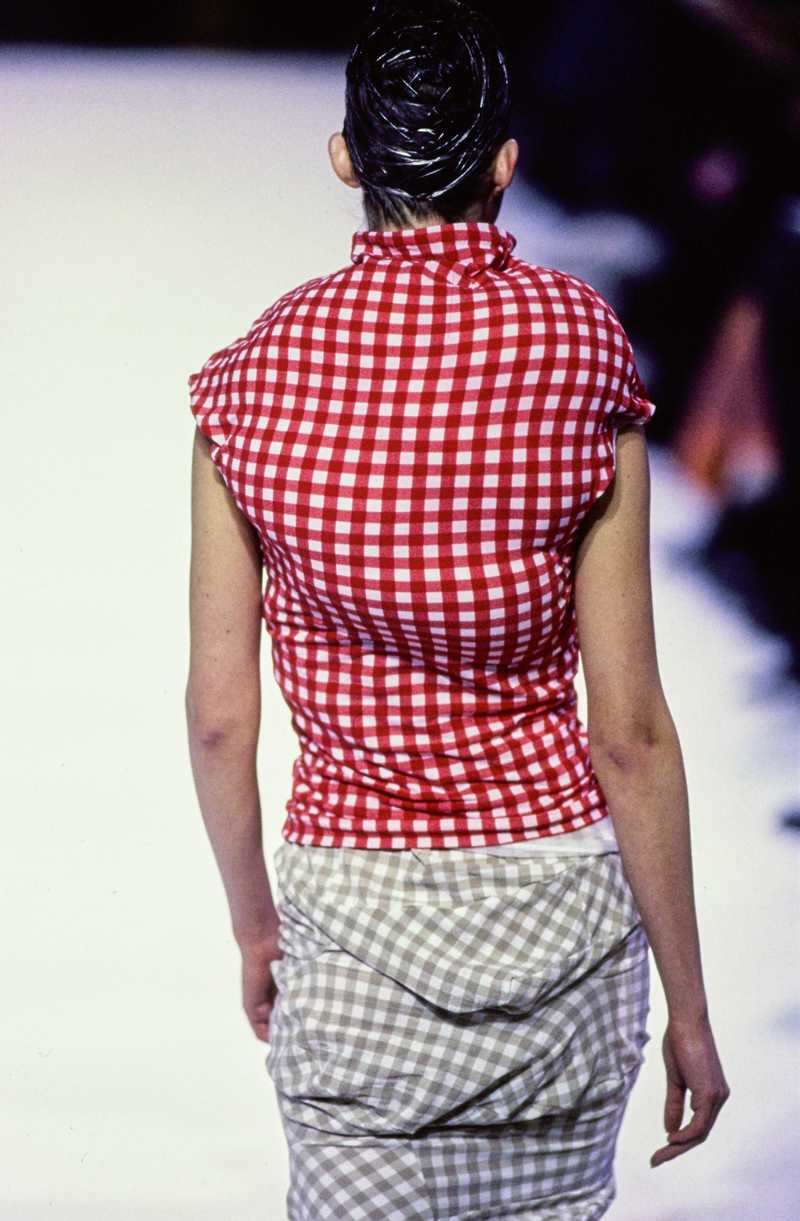On Ugly Clothing
-
In the 1995 "crime film" Hackers, one cast member stands out from the goofy-looking ensemble (which included the likes of Matthew Lillard, famous for his role of the definitively goofy Shaggy in the live-action Scooby-Doo movie).
Angelina Jolie was about 20 years old and her hair was cut into an elven pixie, choppy fringe on her forehead and long, triangle sideburns. In one scene, she wore an iridescent teal rashguard by Quicksilver, logo emblazoned across her chest, with a pair of skintight black pants belted at her waist. I first saw an image of this look when I was 14 or 15 years old and, though it was the dead of winter, pulled out my collection of emphatically modest swimwear. I wore rashguards to high school, sometimes finishing off my look with Keens water shoes (the trendy design hadn't come out yet, so I was out there wearing hiking socks with the most dad-oriented sandals of all time). Jolie looked jaw-droppingly hot and I looked like a little twerp.
Long after I graduated from high school, brands like Keens, Fila, and New Balance came into vogue for their "ugly" clothing. In fashion, "ugly" seems to connote any of the following: chunky, unflattering, brazen, misshapen, immodest but (typically) aggressively non-sexual, frumpy, confusing, perverse. I have always been drawn to clothing that would be widely read as "ugly" - my first fashion obsession was with Comme Des Garçons' 1997 ready-to-wear show unofficially known as "Lumps and Bumps."
These outfits tick most of the boxes for "ugliness" - they obscure the idealized forms of the rail-thin models, they bulge like tumors out of spots of the body that are "supposed to" remain dainty and unnoticed like the shoulders and thighs, they are ostentatious in their deviance from a conventional sillhouette.
Jolie's rashguard and CDG's lumpen garments are both "ugly," yet the former engenders ridiculous beauty in the wearer while the latter's beauty is encapsulated in the garment itself, the wearer becoming irrelevant. Most "ugly" fast fashion skews towards the first manifestation of ugliness - the ugly garment is overshadowed by the beautiful model. Bella Hadid's chunky New Balances or an Instagram model's Bottega Veneta rain boots "set off" their comparatively not-chunky legs, "balance" a flattering top, and most importantly, prove a point: that no matter how ugly a garment they wear, a hottie is a hottie.
This form of ugliness in fashion is not very exciting or compelling and simply retreads the marketing pattern we all know yet fall prey to over and over again: they are selling an aspiration, not just a product. 14 year olds like me watched Hackers and wanted to be so hot that they could look like a vixen in a fucking turtleneck rashguard ON LAND. Mainstream fashion capitalized upon the perverseness of this desire.
But clothing like the lumps and bumps of CDG's collection isn't about aspiration at all. You were barely meant to notice the women wearing the clothes. Instead, you could visualize the garments as living, Cronenbergian creatures in symbiotic (or parasitic) relationships with the creatures underneath. They exuded presence and perversity in and of themselves - the wearer didn't need to look like Angelina Jolie to be endowed with ineffable presence by the garments. They didn't give the wearer something to prove, they simply proved themselves.
These are half-baked thoughts on ugliness in clothing that have probably been expanded upon elsewhere and that I'd love to develop and research more myself. But for now I can say that I hope other young people who are drawn to what they read as ugliness that is contingent upon aspiration and comparison discover garments that are breathtaking and vital in their self-affirmed abjection.

